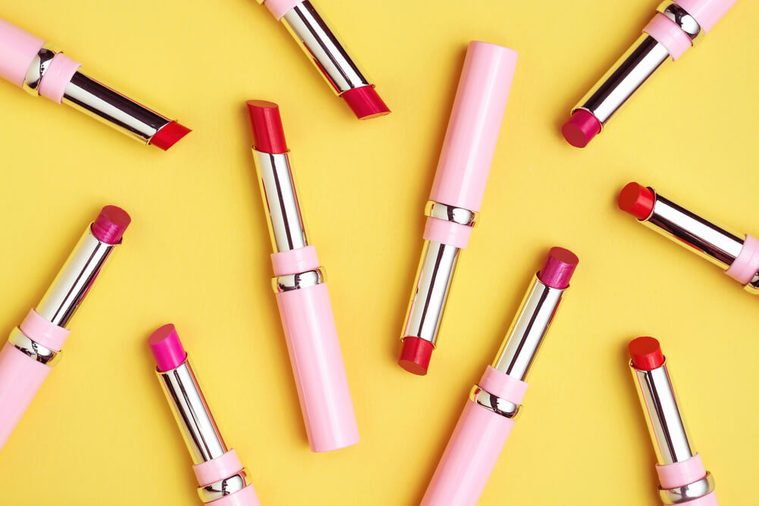The Toxic Chemical Lurking in Your Favorite Lipstick
Updated: Feb. 26, 2021
There could be something dangerous in your favorite tube of luscious red lipstick. Here's what you need to know to stay safe.
The government and consumer watchdog groups are taking beauty companies to task for some of their toxic ingredients—and it’s about time. For now, though, it’s still important you use caution. Why? There may be lead in your lipstick.
The Food and Drug Administration and the Campaign for Safe Cosmetics began researching lead in lipstick around 2007: They found that 61 percent of 33 popular lipstick brands tested positive for lead. An expanded 2010 study by the FDA found lead in over 400 different lipsticks. Researchers at the University of California discovered that lead isn’t the only thing to be wary of: They found toxic metals like chromium, aluminum, and manganese can also turn up in beauty products. (Find out the 31 secrets the beauty industry doesn’t want you to know.)

“Lead contamination in lipstick is a documented problem that can adversely impact the health of women and kids that dip into their mother’s makeup bag,” says Janet Nudelman, director of Program and Policy at the Breast Cancer Prevention Partners, as well as director of BCPP’s Campaign for Safe Cosmetics. “Men are also at risk of exposure from lead acetate in men’s hair dye, like Grecian Formula, and other sources.”
Lead poses health risks to men and women of all ages, but children should be extra cautious of products containing lead. “The main problem with lead is that it’s neurotoxin in that is has an effect on the brain,” explains Nneka Leiba, director of Healthy Living Science at EWG. “So it’s especially harmful to younger children because the brain isn’t fully developed.”
Experts agree that there is “no safe” level of lead: Low amounts can cause weakness, increases in blood pressure, and anemia; higher exposure can severely damage the brain, kidneys, and other organs—and it can be life-threatening.
You can stay safe by shopping smartly: “Consumers should avoid lipsticks that they know have tested high in lead contamination,” says Nudelman. “They should contact their favorite brands and ask them if they have a policy in place to test their raw materials for lead contamination.” Here are 12 more toxic ingredients found in your beauty products.
“You have to do your research,” adds Leiba.
You can learn more about the FDA’s take on this problem here.
Wondering what other beauty products might be harmful? Here are the signs your skin products are secretly damaging your face.